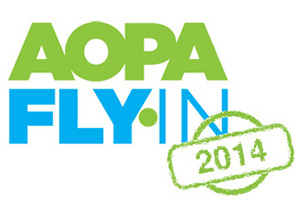
You taxi down a long row of aircraft, proceeding slowly, watching for people and ground vehicles, and complying with the hand signals of the line crewmember marshalling you toward a parking spot. Many of the signals he uses seem intuitive, but others were worth reviewing in Section 4-3-25 of the Aeronautical Information Manual before you headed out to attend a spring fly-in on a dual cross-country with your flight instructor.
Applying your aeronautical "book knowledge" is one of many ways aviation events like the AOPA Regional Fly-Ins, beginning April 26 at San Marcos, Texas, Municipal Airport, can raise your experience level and whet your appetite for aviation.
Volunteering to assist at one of the year's six fly-ins with set-up, parking, directing ground transportation, or other duties is another way to expand your aviation horizons—and is likely to help you connect with new friends with whom to share your piloting goals and training experiences.
If it looks like one or more of the fly-in destinations is within your reach, get a head start on flight planning by doing some preliminary research now. Work out one or more VFR cross-country routes for a flight to the destination; give airspace, terrain, airport characteristics, and the location of alternate airports along the route some study, for starters.
It's never too early to familiarize yourself with the destination's weather trends, and you'll get some excellent practice reviewing its METARs and TAFs in the process.
Don't forget to check and recheck notams. (A student pilot doing some early flight planning on April 10 for San Marcos would have learned that a temporary flight restriction was briefly in effect that day during a presidential visit to the area—an important reminder of the need to keep on top of restrictions that could crop up with little notice.) And check for special procedures for fly-ins, which are released in advance. AOPA just announced its special procedures for San Marcos.
While examining the local sectional aeronautical chart, determine how you would update weather while aloft, open and close a VFR flight plan, and request service from air traffic control. Note that on a flight to San Marcos, broadcasts of the hazardous in-flight weather advisory service (HIWAS) may be heard over the San Antonio Vortac, 35 nautical miles southwest.
All AOPA Regional Fly-In volunteers receive a lunch, a hat, a T-shirt, and the gratitude of AOPA and your fellow attendees. If pitching in helps you progress in your training program, even better!
|


